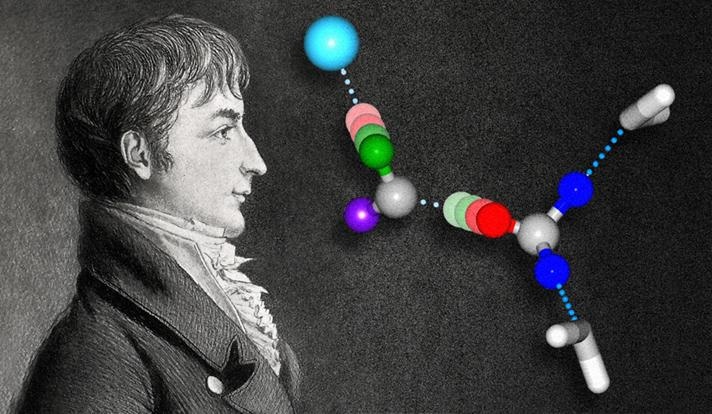Dec 2 2016
 Researchers have taken spectroscopic snapshots of the passage of extra protons from one water molecule to another during conductivity, a mechanism first described by chemist Theodor Grotthuss. (Credit - Grotthuss image courtesy of Wikipedia)
Researchers have taken spectroscopic snapshots of the passage of extra protons from one water molecule to another during conductivity, a mechanism first described by chemist Theodor Grotthuss. (Credit - Grotthuss image courtesy of Wikipedia)
Researchers have taken spectroscopic snapshots of the passage of extra protons from one water molecule to another during the process of conductivity, which is considered as nature's most mysterious relay race.
This finding signifies a huge benchmark in scientific knowledge of the way in which water conducts a positive electrical charge, which is an elementary mechanism found in chemistry and biology. The research team, headed by Yale chemistry professor Mark Johnson, reported their discovery in the December 1 issue of the Science journal.
For over two centuries, scientists have speculated about the exact forces at work when electricity passes through water - a process referred to as the Grotthuss mechanism. For instance, it occurs in vision when light touches the eye's retina. It also occurs in the way fuel cells function.
But the specifics have remained vague. In particular, scientists have been searching for an experimental approach to study the structural changes in the network of interconnected water molecules when an extra proton is moved from one oxygen atom to another.
The oxygen atoms don't need to move much at all. It is kind of like Newton's cradle, the child's toy with a line of steel balls, each one suspended by a string. If you lift one ball so that it strikes the line, only the end ball moves away, leaving the others unperturbed.
Mark Johnson, Chemistry Professor, Yale University
For many years Johnson's lab has been exploring the chemistry of water at the molecular level. Frequently, this is performed with specially designed instruments constructed at Yale. Among the lab's several discoveries are ground-breaking uses of electrospray ionization, which was formulated by the late Yale Nobel laureate John Fenn.
Johnson and his team have developed methods to quick-freeze the chemical process so that transient structures can be isolated, exposing the contorted arrangements of atoms during a reaction. The practical applications for these methods span from the development of pharmaceuticals to the optimization of alternative energy technologies.
With regard to the proton relay race, earlier attempts to capture the process centered on using infrared color changes to view it. But the outcome always appeared like a blurry photograph.
In fact, it appeared that this blurring would be too severe to ever allow a compelling connection between color and structure.
Mark Johnson, Chemistry Professor, Yale University
He found the solution was to only analyze a few molecules of "heavy water" - water composed of the deuterium isotope of hydrogen - and chill them to more or less absolute zero. All of a sudden, the images of the proton in movement were significantly sharper.
"In essence, we uncovered a kind of Rosetta Stone that reveals the structural information encoded in color," Johnson said. "We were able to reveal a sequence of concerted deformations, like the frames of a movie."
Johnson's lab received support from the experimental group of Knut Asmis at the University of Leipzig and the theory groups of Ken Jordan of the University of Pittsburgh and Anne McCoy of the University of Washington.
Johnson noted that one area where this data will be applicable is in understanding chemical processes that happen at the surface of water. Recently, scientists are discussing whether the surface of water is relatively acidic than the bulk of water. There is no method to measure the surface pH of water.